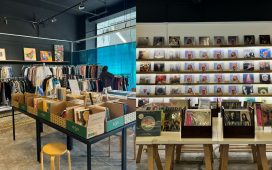Boris Eldagsen, an artist in Berlin, has revealed the photo he submitted to a high-profile photography competition was created using artificial intelligence. Eldagsen, who won first prize, says he won’t accept the money and other benefits from his successful prank, which is sure to raise questions in the art world about how to deal with an influx of AI-created images.
Eldagsen won first place in the creative category at the World Photography Organization’s Sony World Photography Awards, which included $5,000 and free Sony camera equipment. But the artist wrote in an open letter on his website that he would not be accepting the award.
“Thank you for selecting my image and making this a historic moment, as it is the first AI generated image to win in a prestigous [sic] international PHOTOGRAPHY competition,” Eldagsen explained in an open letter on his website.
“How many of you knew or suspected that it was AI generated? Something about this doesn’t feel right, does it? AI images and photography should not compete with each other in an award like this. They are different entities. AI is not photography. Therefore I will not accept the award,” Eldagsen continued.
Eldagsen’s photo, which depicts two women in a style that emulates the photographic techniques of the first half of the 20th century, has been scrubbed from the competition’s website. There’s also no indication the World Photography Organization has acknowledged Eldagsen’s hoax. The organization did not immediately respond to questions on Monday morning.
Eldagsen’s process is explained on his website, where he’s trying to create “fake memories” of the past.
“Using the visual language of the 1940s, Boris Eldagsen produces his images as fake memories of a past, that never existed, that no-one photographed. These images were imagined by language and re-edited more between 20 to 40 times through AI image generators, combining ‘inpainting’, ‘outpainting’ and ‘prompt whispering’ techniques,” his website reads.
Free AI tools to create photos using nothing more than text prompts have become incredibly popular over the past six months. Websites like DALL-E, Stable Diffusion, and MidJourney let anyone with an internet connection create photo-realistic fake images in seconds. And everyone from lawyers to ethicists have struggled to catch up.
For instance, an image that appeared to show Pope Francis wearing a big puffy white coat went viral last month, but it was created using MidJourney. And former president Donald Trump recently shared an AI-created image of himself kneeling down to pray. Meanwhile, critics of Trump created fake photos of the 45th president being arrested, long before he was actually taken into custody and arraigned in New York over hush money payments to a porn star.
Some internet pranksters have even used MidJourney to create fake historical events, like a 2001 earthquake in the Pacific Northwest that never happened—something that could really confuse people of the future searching through the internet for historical information.
Getty Images has sued the company behind Stable Diffusion, noting in court filings that the fake image generator will sometimes even create a fake watermark identical to that of Getty, a hint at how these models are trained by scraping millions of copyrighted images from the web.
MidJourney was so overwhelmed with users recently that it had to halt all free trials. And despite the fact that there are still subtle hints when an image is fake—like an absurd number of fingers on a given hand—these tools are only going to get better with time.








